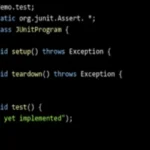How AI Trading Algorithms Work
The financial markets have undergone a remarkable transformation with the integration of artificial intelligence in trading systems. Modern trade bot technology has revolutionized how investors interact with markets, offering unprecedented speed and analytical capabilities. AI trading algorithms represent a significant leap forward from traditional trading methods, using machine learning and big data to identify patterns, predict market movements, and execute trades with minimal human intervention. The growing popularity of these sophisticated systems has changed the landscape for investors across the US, UK, Australia, and Europe.
Fundamentals of AI Trading Technology

AI trading technology applies artificial intelligence to analyze vast amounts of financial data and execute trades based on patterns and predictions. These systems leverage machine learning, natural language processing, and big data analytics to process information at speeds impossible for human traders. The evolution from simple rule-based algorithms to sophisticated AI-powered systems represents a dramatic advancement in trading technology.
Modern AI trading platforms can:
- Process millions of data points in microseconds
- Identify complex patterns across multiple markets
- Adapt strategies based on changing conditions
Unlike traditional algorithms that follow static rules, AI systems can detect subtle changes in market dynamics and adjust their strategies accordingly, making them valuable in volatile markets.
Machine Learning in Trading Algorithms

Machine learning forms the core of modern AI trading algorithms, enabling these systems to identify patterns and make predictions without explicit programming. These algorithms use historical data to train models that can forecast market movements and discover profitable trading opportunities.
Different machine learning approaches serve various functions:
- Supervised learning identifies patterns based on labeled historical data
- Reinforcement learning optimizes trading strategies through trial and error
The power comes from processing enormous datasets and identifying correlations that human traders might miss. As these systems accumulate more data, they continuously refine their models, improving their predictive accuracy over time.
Key Components of AI Trading Systems
Effective AI trading platforms consist of several essential components working together as an integrated system. The architecture typically includes data processing capabilities, algorithm development frameworks, backtesting tools, and execution systems.
Data infrastructure provides the raw material needed for analysis, while the algorithmic engine processes this data using mathematical models to generate trading signals. Backtesting frameworks validate these signals against historical data before risking real capital. The execution system translates trading signals into actual market orders with minimal latency. Together, these components create a solution that can analyze markets, generate insights, and automatically execute trades.
Data Processing and Analysis
AI trading algorithms collect and analyze market data from multiple sources including price movements, trading volumes, economic indicators, and sentiment from news and social media. The quality and reliability of this data significantly impact algorithm performance.
Effective data processing involves cleaning and normalizing raw data, feature engineering to identify relevant variables, and real-time processing to enable immediate response to market changes. High-quality data preprocessing is essential for developing effective trading models that can distinguish between meaningful patterns and random noise.
Predictive Modeling Techniques
AI trading algorithms employ various modeling techniques to forecast market movements, from statistical approaches to advanced neural networks. Different models excel at capturing different aspects of market behavior.
Common predictive modeling approaches include:
- Regression analysis for price forecasting
- Neural networks for pattern recognition in complex data
Many algorithms also incorporate sentiment analysis of news articles and social media to gauge market mood and anticipate price reactions to information, potentially providing early signals of price movements.
Trading Strategies Powered by AI
AI has enhanced traditional trading strategies by leveraging its superior data processing capabilities. Common strategies include trend following, mean reversion, statistical arbitrage, and high-frequency trading. These approaches take advantage of AI’s ability to process massive amounts of data and identify subtle patterns.
The precision and speed of AI systems enable these strategies to be executed with greater efficiency than traditional methods. By eliminating emotional decision-making and human error, AI algorithms can consistently apply trading rules while adapting to changing market conditions in real-time.
High-Frequency Trading Applications
AI algorithms have become indispensable in high-frequency trading where success depends on executing trades in milliseconds. These systems analyze market data and make trading decisions faster than any human could, capitalizing on fleeting price inefficiencies.
Successful high-frequency trading requires ultra-low latency infrastructure, co-location with exchange servers, and sophisticated algorithms that can make split-second decisions. AI enhances this approach by quickly identifying price discrepancies across different markets or related securities.
Risk Management in AI Trading
Sophisticated risk management is an essential component of AI trading systems. These platforms implement automated risk control mechanisms that constantly monitor positions and adjust trading parameters based on market conditions and portfolio performance.
Machine learning algorithms can enhance risk management by identifying potential market risks before they manifest. For example, an AI system might detect unusual patterns that historically preceded significant downturns and reduce exposure accordingly. These systems constantly adjust to changing volatility conditions, ensuring risk exposure remains within predefined limits.
Challenges and Limitations
Despite their sophisticated capabilities, AI trading systems face significant challenges. Overfitting to historical data remains a persistent problem, where algorithms perform well in backtests but fail with new market conditions. Most AI systems struggle to predict black swan events or market crashes that don’t resemble historical patterns.
Technical vulnerabilities present another challenge, as system failures can lead to substantial losses. Market volatility and unpredictable human behavior can confound even the most advanced AI systems, highlighting the continued importance of human oversight.
Market Impact and Systemic Risks
The proliferation of AI trading algorithms raises concerns about their collective impact on market stability. When multiple systems using similar models react simultaneously to the same signals, they can potentially amplify market movements and contribute to flash crashes or extreme volatility.
Regulatory bodies have implemented various safeguards to mitigate these risks, including circuit breakers and requirements for testing algorithmic trading systems. Finding the right balance between algorithmic efficiency and market stability remains an ongoing challenge.
AI Interpretability Issues
The “black box” nature of many AI trading algorithms presents challenges for oversight and risk management. Complex deep learning models often make decisions that aren’t easily explained, creating difficulties for regulatory compliance and investor trust.
The financial industry is increasingly focused on developing more interpretable AI systems. The push toward “explainable AI” aims to create models that can provide clear rationales for their decisions while maintaining predictive power.
Implementing an AI Trading Strategy
Successfully implementing an AI trading strategy requires thoughtful planning and realistic expectations. Traders must decide whether to develop custom algorithms or use existing platforms that provide ready-made solutions.
Key considerations include:
- Computing infrastructure requirements and costs
- Data quality and availability for algorithm training
- Regulatory compliance in relevant jurisdictions
Human oversight remains essential even with fully automated systems. Traders should regularly review algorithm performance and be prepared to intervene during unusual market conditions.
Conclusion: Finding the Right Approach
AI trading algorithms offer powerful capabilities that can potentially enhance trading performance through superior data processing, pattern recognition, and execution speed. However, these systems also have meaningful limitations that traders must understand and address through robust risk management protocols.
The most effective approach for many market participants combines algorithmic efficiency with human discretionary oversight—a hybrid model that leverages computational alpha generation while maintaining human judgment for strategic capital allocation decisions. As quantitative finance continues to evolve, maintaining awareness of emerging machine learning architectures and alternative data sources while implementing proper cross-validation techniques will help traders optimize the Sharpe ratio of their strategies while mitigating drawdown risk.
The future of algorithmic trading lies not in complete automation but in the synergistic relationship between advanced statistical models and experienced human judgment, particularly during periods of regime change or market dislocation when historical correlations may break down.




